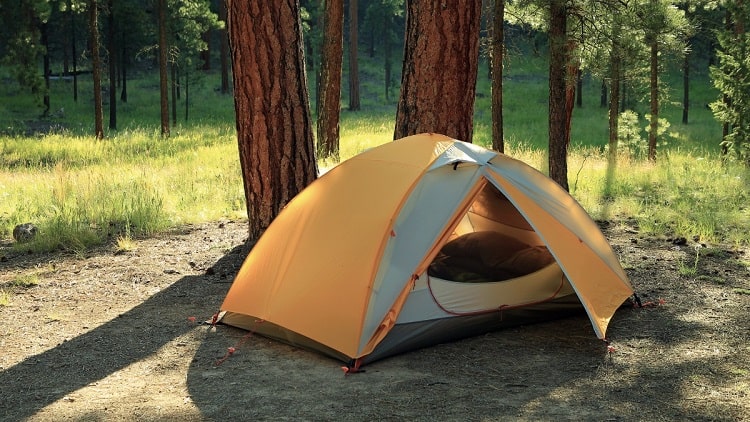Last updated: February 28, 2024
Reviews of three of the best 1-person tents for overnight hikes and camping trips, based on weight, materials, features, price, and more.
Choosing the right tent that suits your needs can be quite challenging, as there are many different products to choose from and various selection criteria to consider.
We’ve done much of the research for you and have tested, reviewed, and shortlisted three of the best one-person tents you can buy today.
Top 3 One-Person Tents:
| 1-Person Tent | Price | |
|---|---|---|
| 1 | Naturehike Cloud Up 1P Tent | Price |
| 2 | OZtrail Nomad 1-Person Tent | Price |
| 3 | ALPS Mountaineering Lynx 1-Person Tent | Price |
Top rated tent on Amazon:
- 【ULTRA-LIGHTWEIGHT ONE PERSON TENT】: Made of lightweight...
- 【EASY SETUP & PACK DOWN】: With one set of aluminum alloy...
- 【WATERPROOF& WINDPROOF】:The Cloud up 1 person tent made...
Top 3 One-Person Tents
Let’s take a closer look at these three tents.
Have you considered using a swag? Check out our best swag buying guide with reviews of some of the best models on the market.
1. Naturehike Cloud Up 1P Tent
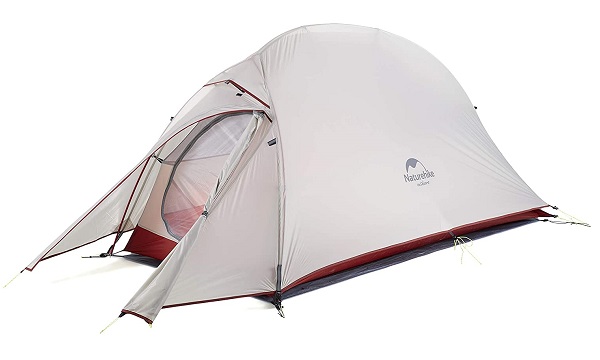
The affordable Naturehike Cloud Up 1-person tent weighs just over 1.5 kg and is easy to set up with double flysheets.
The tent fly and floor are made from 20D silicone coating nylon with a 4000 mm rated waterproof index, which is above average for tents in this price range. Naturehike tent poles are made from strong 7001 aluminium alloy. Note that you can choose between different colours and materials; polyester or nylon.
The tent is also easy to pack up and comes with a compact compression bag perfect for overnight hiking trips. Overall, the Naturehike Cloud Up represents excellent value for money, suitable for those looking for a comfortable tent without blowing the budget.
| Naturehike Cloud Up 1P Tent | |
|---|---|
| Weight: | 1.6 kg |
| Packed size: | 45 x 12 cm |
| Dimensions: | 230 x 110 cm |
2. OZtrail Nomad 1-Person Tent
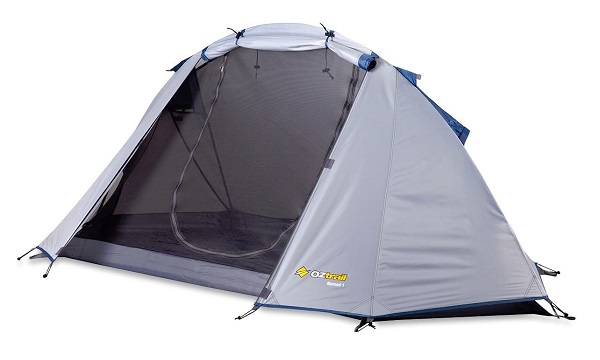
The OZtrail Nomad 1-Person Tent is light on the load and easy on the pocket. Weighing less than 2 kilos, it’s a no-frills kind of tent that’s easy to pitch so that you can go on enjoying the outdoors.
Although it’s a single-person tent, it’s actually quite roomy. You can put your baggage and gear inside the tent, and you’d be able to stretch comfortably. This tent’s design doesn’t come with a vestibule, but it does have interior pockets that you can use to store some of your gear.
Its polyester is coated with UVTex, so it deflects UV rays and helps make the tent rainproof. The OZtrail nomad also has two vents that take care of any condensation problems. The tent door is relatively large and has an angled opening that makes it easy for you to crouch down and zip it up.
| OZtrail Nomad 1-Person Tent | |
|---|---|
| Weight: | 1.9 kg |
| Packed size: | 44 x 14 x 14 cm |
| Dimensions: | 240 x 130 cm |
| Floor area: | 230 x 105 cm |
3. ALPS Mountaineering Lynx 1-Person Tent
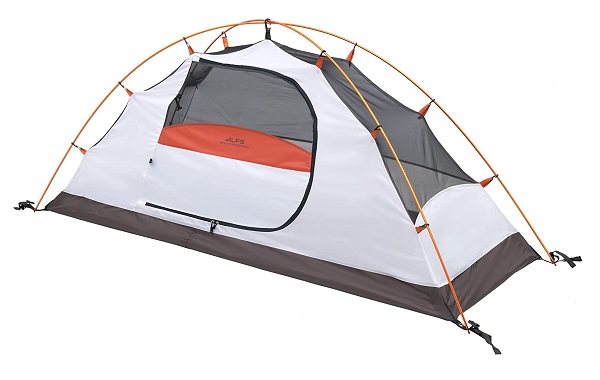
This 1-person tent by ALPS Mountaineering stands out as a tent that is lightweight, compact, and incredibly easy to set up.
The Lynx has a freestanding design with two aluminium poles which makes assembling as easy as it gets. The vestibule with zipping is a welcome addition as an extra storage space and a small sheltered area. The polyester tent fly protects against UV damage and keeps water out, while the various zippers, pockets, gear loft, and doorway make this a versatile and practical tent.
The ALPS Mountaineering Lynx tent has been around for quite a few years (also available with higher sleeping capacity) and has proven to be a robust and reliable product. It’s not the cheapest, but it will last for many years.
| ALPS Mountaineering Lynx 1-Person Tent | |
|---|---|
| Weight: | 1.8 kg |
| Packed size: | 43 x 15 cm |
| Dimensions: | 228 × 81 cm |
| Floor area: | 1.9 m2 |
Buying Guide
Choosing the right 1-person tent is important as it’s not an item you’d want to replace after using it just once or twice.
Here are some of the most important factors to consider when choosing the best tent for your hiking and camping adventures:
- Weight
- Capacity and interior space
- Season rating
- Freestanding vs non-freestanding
- Design and features
- Price
1. Weight
A key difference between a 1-person camping or hiking tent and a holiday tent is that a smaller tent is obviously much lighter. When hiking, you need to be able to carry a tent around comfortably, so weight is a crucial decision factor.
Some prefer the lightest tent possible, sacrificing a bit of internal space. Others prefer a bit more comfort and are happy to carry more weight around if necessary.
2. Capacity and Interior Space
Camping tents come in various sizes and dimensions, and it depends on your personal needs what type of tent is best for you.
For example, if you usually go hiking or camping in a group of three friends, you could either for a 3-man tent or a three 1-man tent. A 3-man tent would typically be cheaper than three individual tents, but you would have less space and privacy.
The other benefit of a 3-man tent in this scenario is that you would only have to carry one packed tent around, and you can take turns between the three of you.
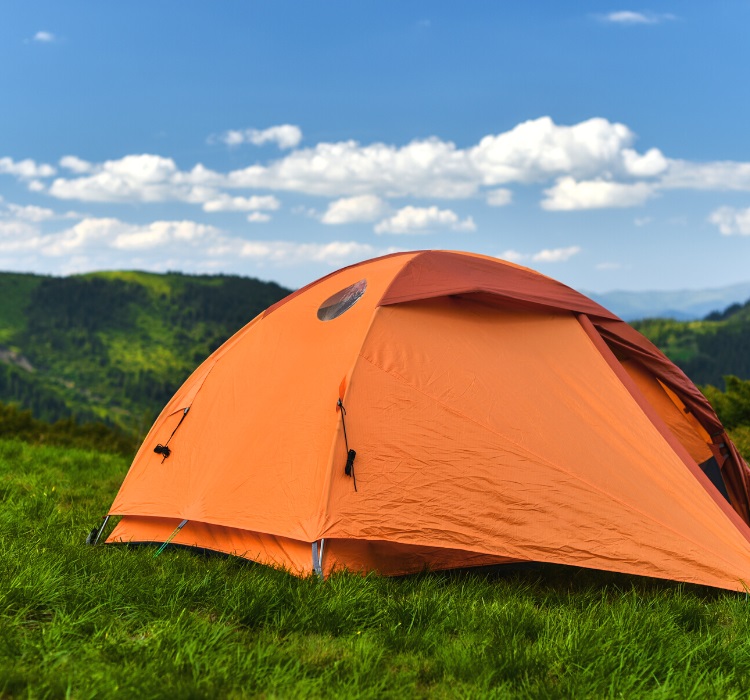
Alternatively, you can choose a 3-man tent for two people to sleep in or a 4-man tent to accommodate three people. It all depends on how much comfort and space you think you will need.
Interior space is also an important decision factor. If you’re a bigger person, don’t go for a super compact 1-man tent. There are, in fact, quite some variations between brands when it comes to internal space, so make sure that you choose a tent that is large enough for you to sleep in.
3. Season Rating
Perhaps not the most crucial deciding factor when hiking in Australia, season rating can still be something to consider. Most tents are marked as 3-season tents, meaning they’re suitable for spring, summer and autumn.
If you’re planning to use your tent in cold winter conditions and/or mountaineering, make sure it’s a 4-season tent that can handle those lower temperatures and even snowfall.
4. Freestanding vs Non-Freestanding
Freestanding tents are easier and faster to set up. They are often preferred for overnight hiking or camping trips to save time.
They typically come with a fixed pole rather than pegs allowing you to set up pretty much anywhere you like.
Non-freestanding tents are usually lighter (no poles) but are more difficult and time-consuming to set up. They also require more real estate. The process of setting up your tent is something you can practice and get used to, though.
5. Design and Features
Even with lightweight tents, there can still be crucial differences in how they are designed. One or multiple doors, single wall or double-walled, air vents, interior pockets, and so forth. We recommend tents that are simple yet durable.
The more bells, whistles and other features, the more complicated it is to set up the tent and the more things that can break. Having said that, basic features such as interior pockets and vestibule can come in very handy.
6. Price
Price is always important, no matter what you’re buying. You’ll find that most tents are priced similarly, with a few exceptions.
If you’re planning to use your tent often and possibly in harsh conditions, don’t be afraid to spend a bit more. It’s an old saying, but it’s usually true, you get what you pay for.
